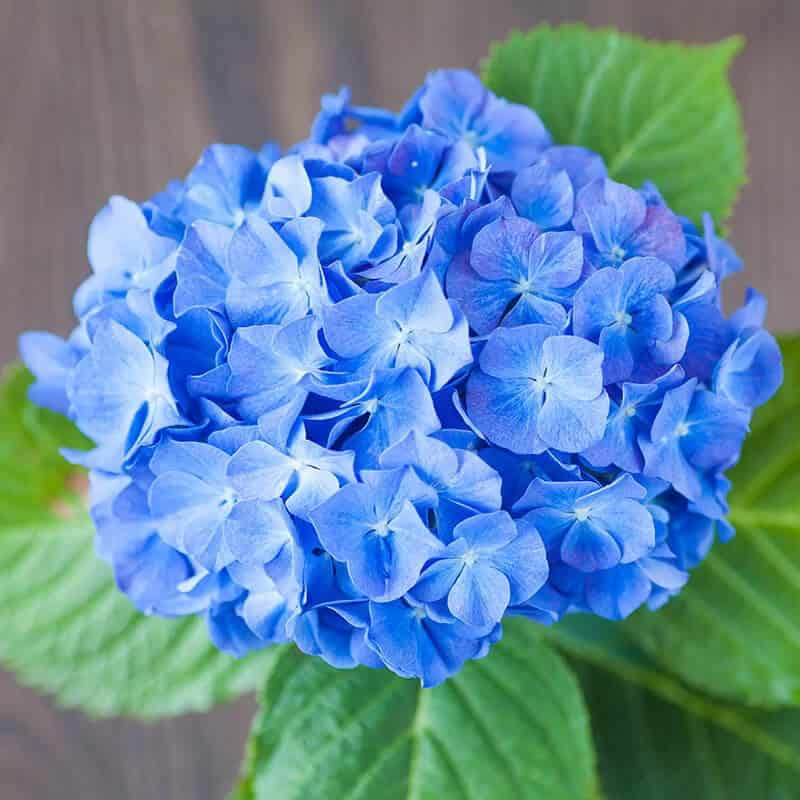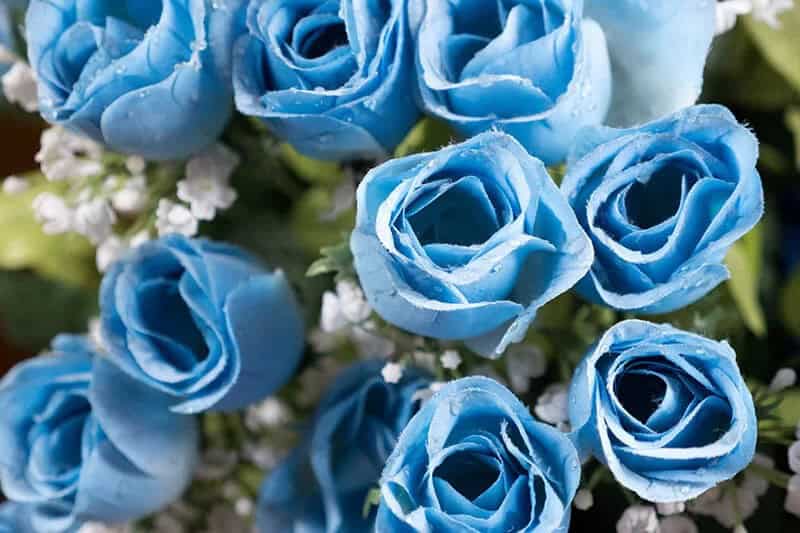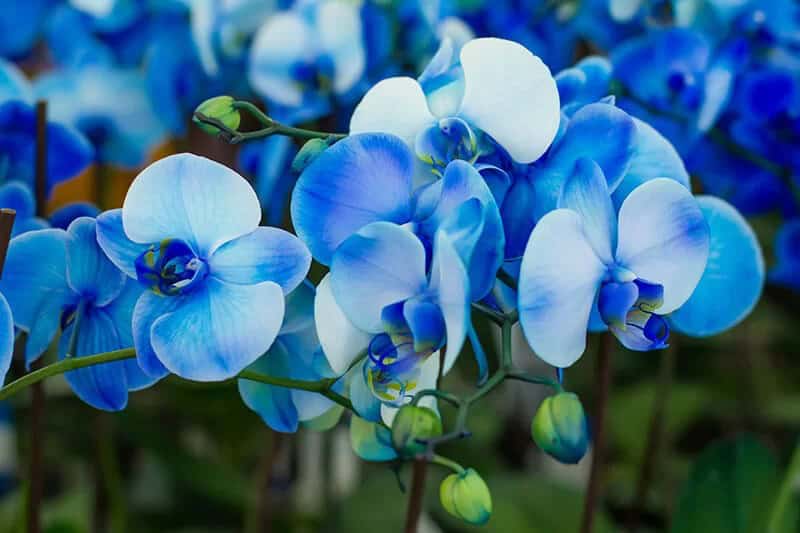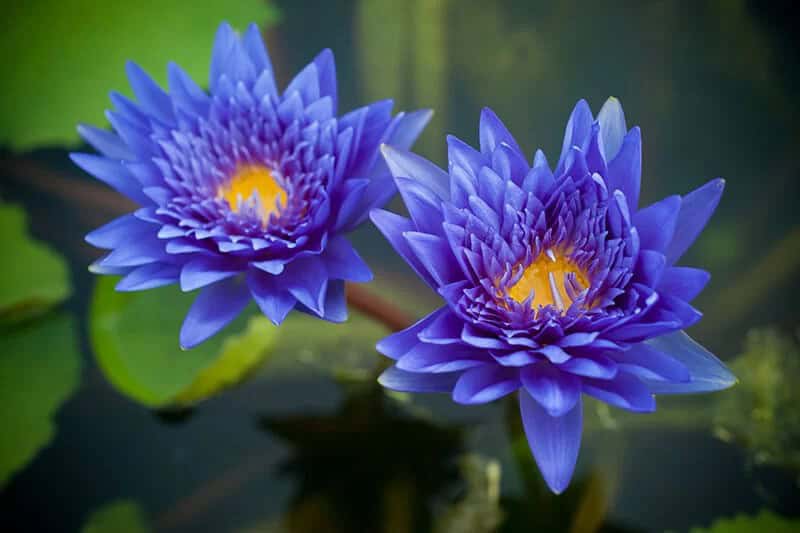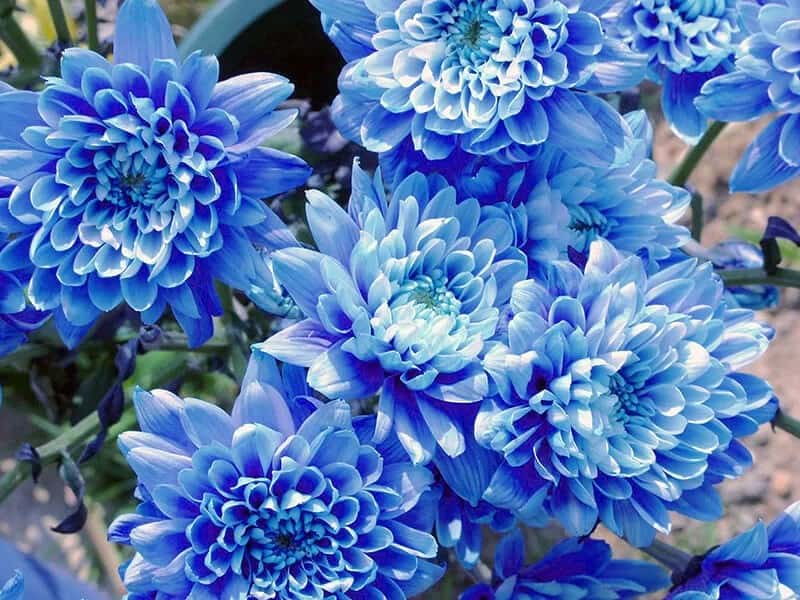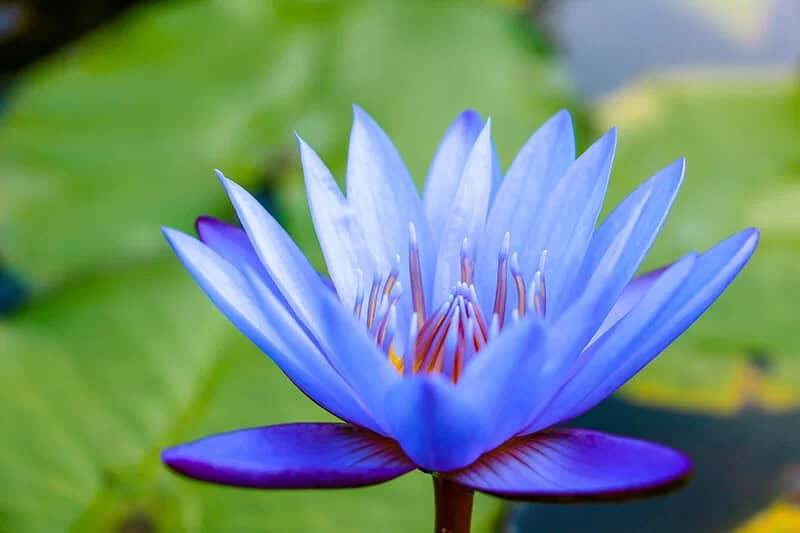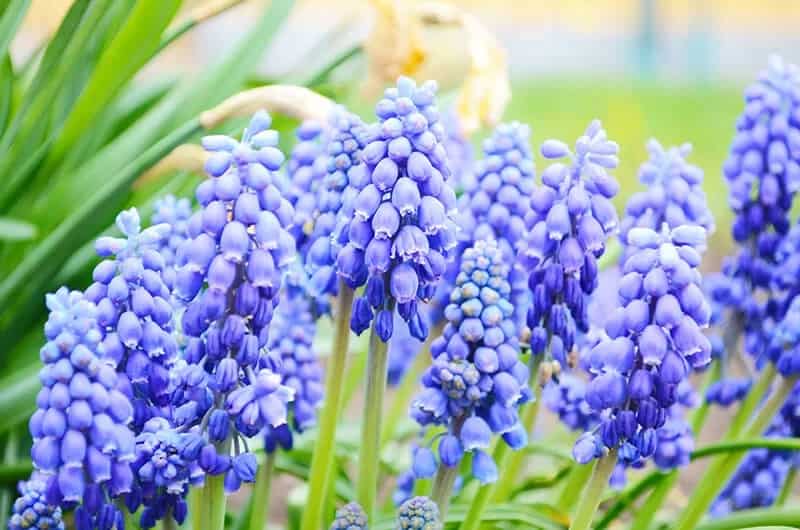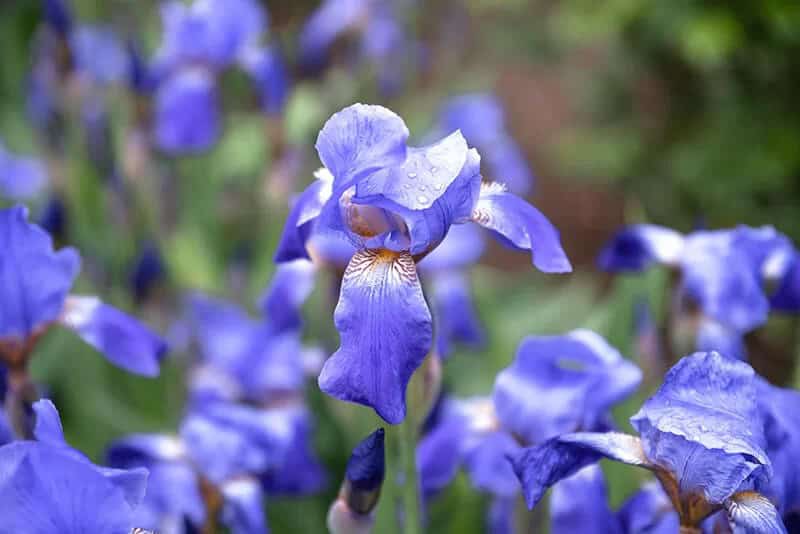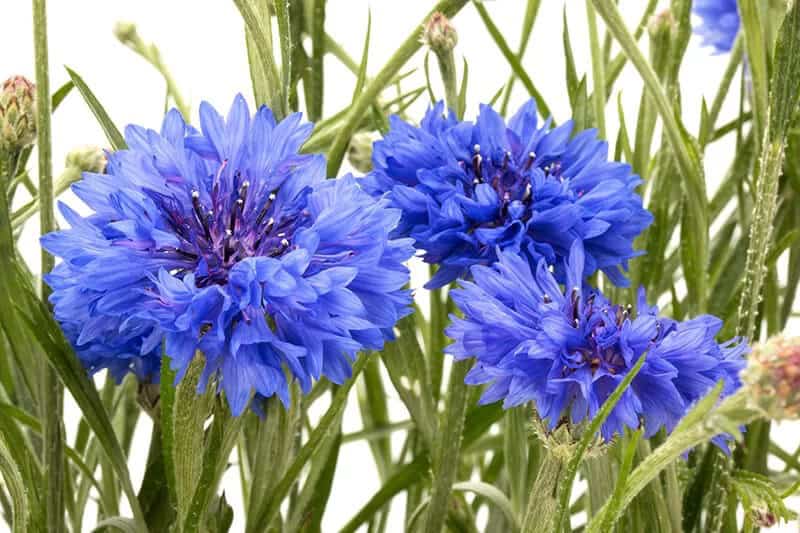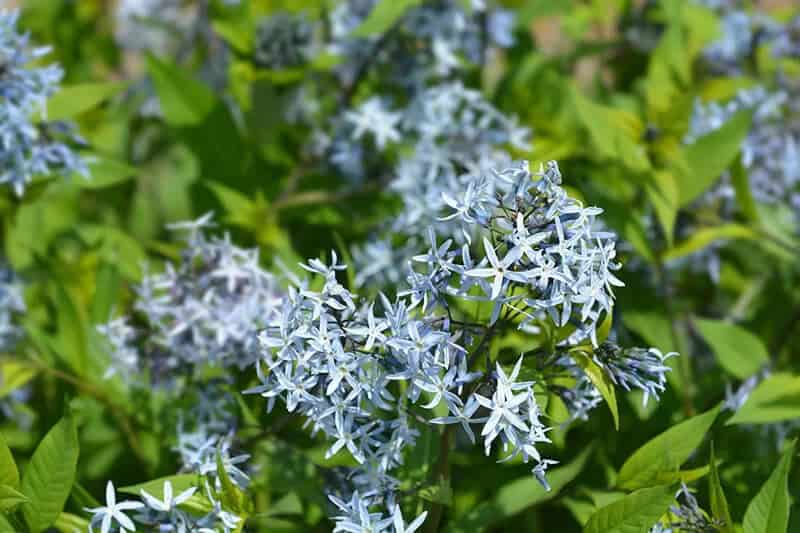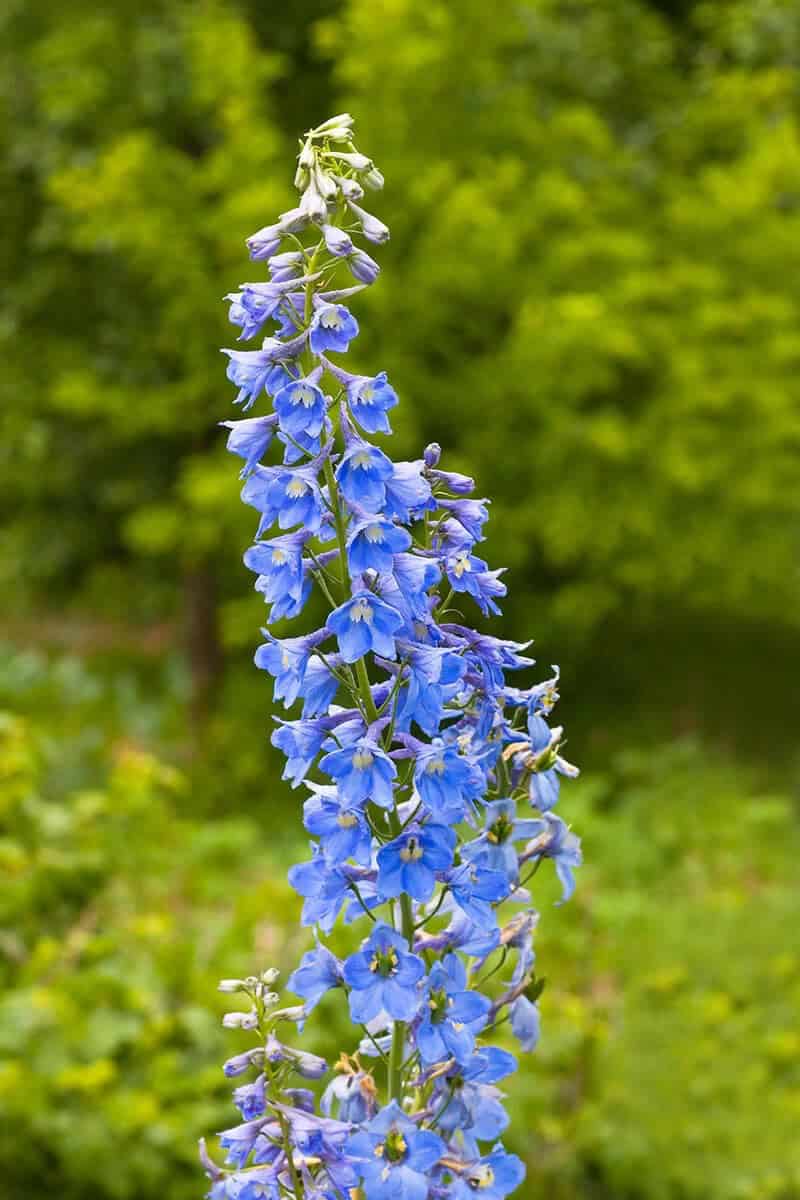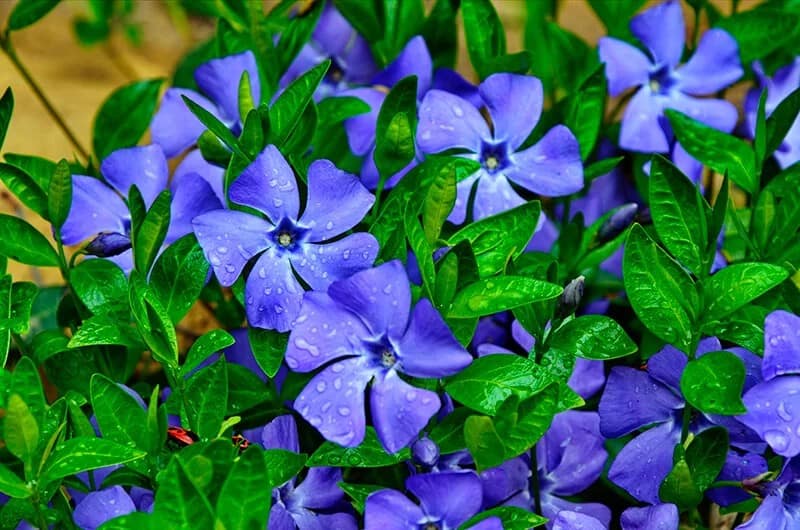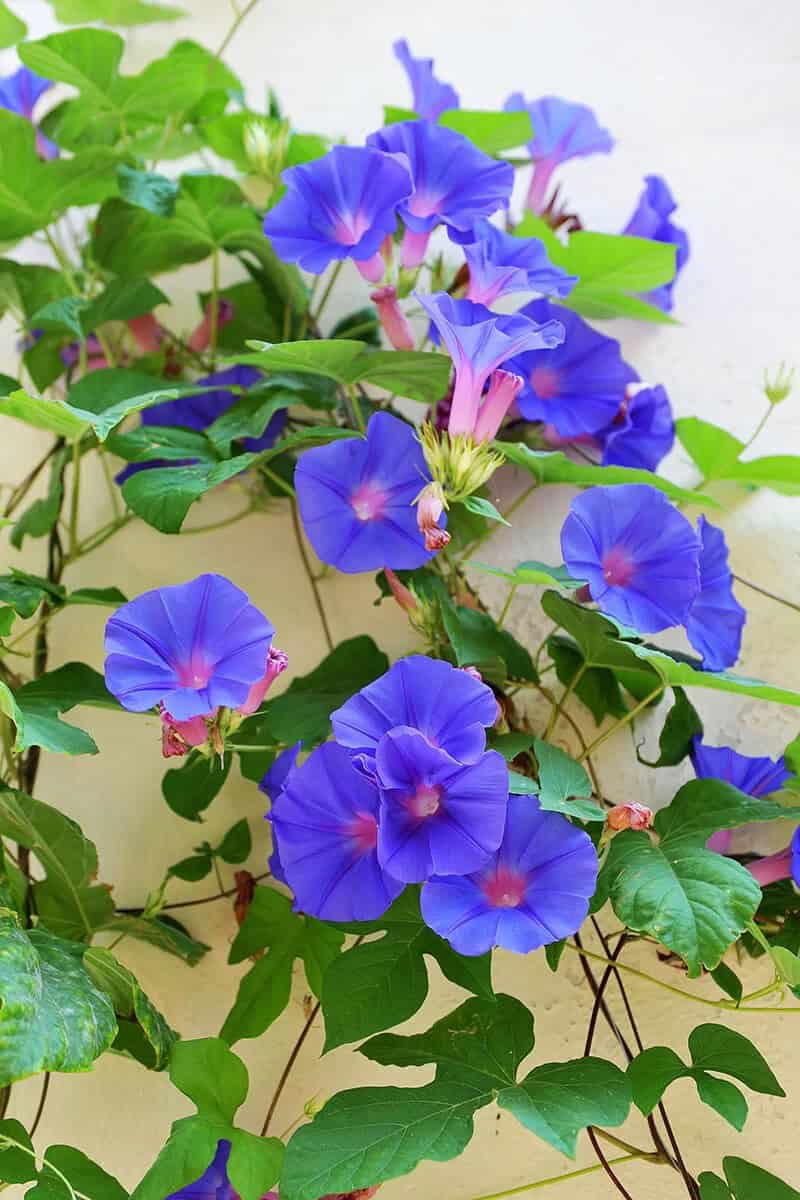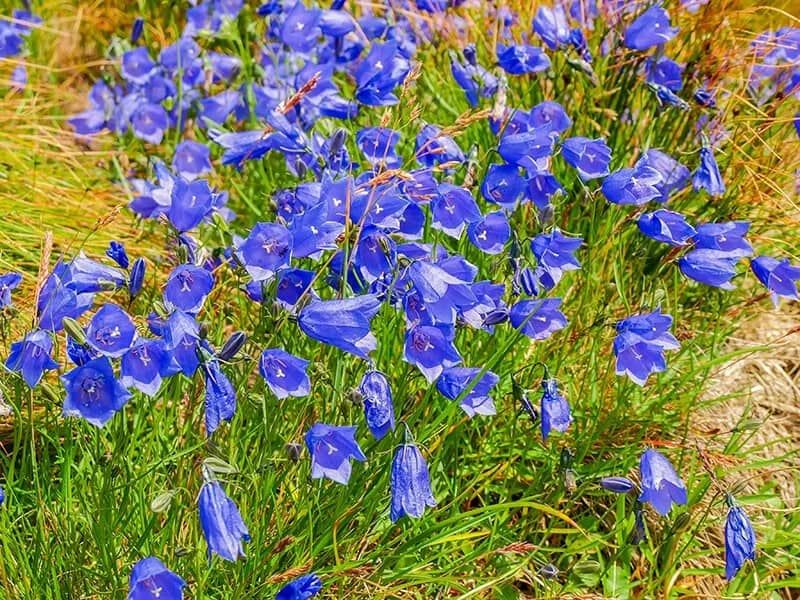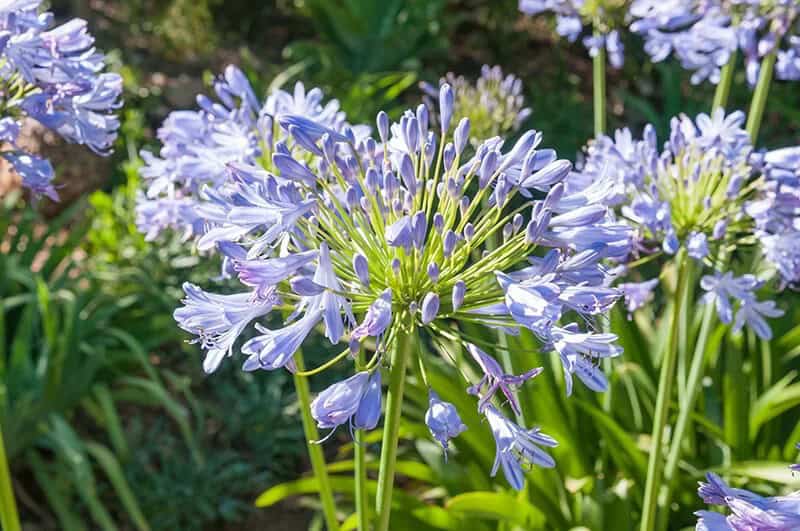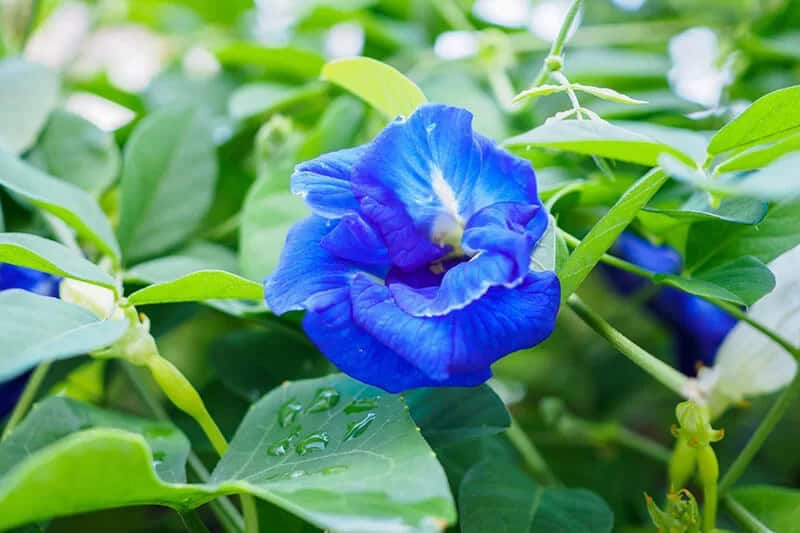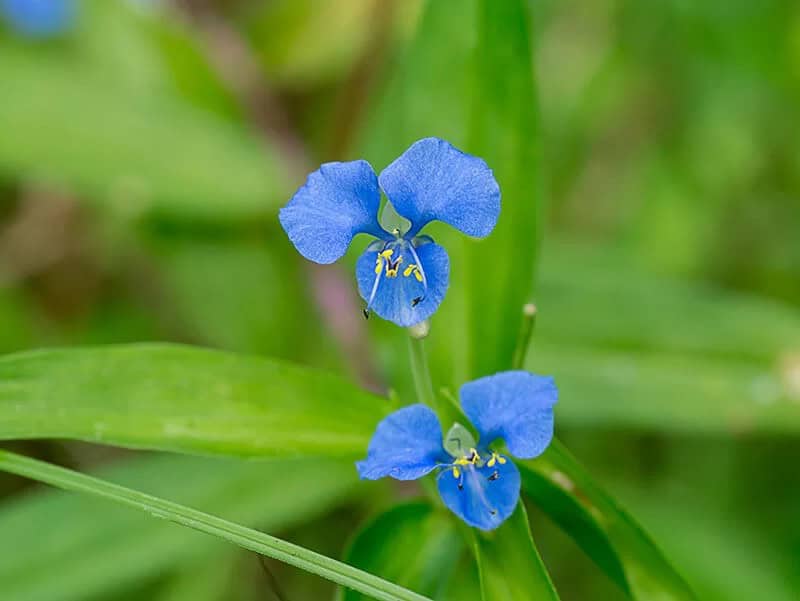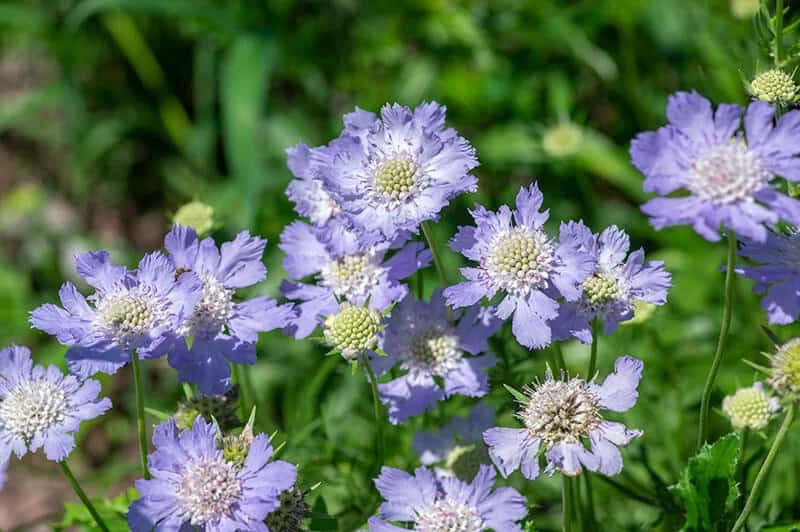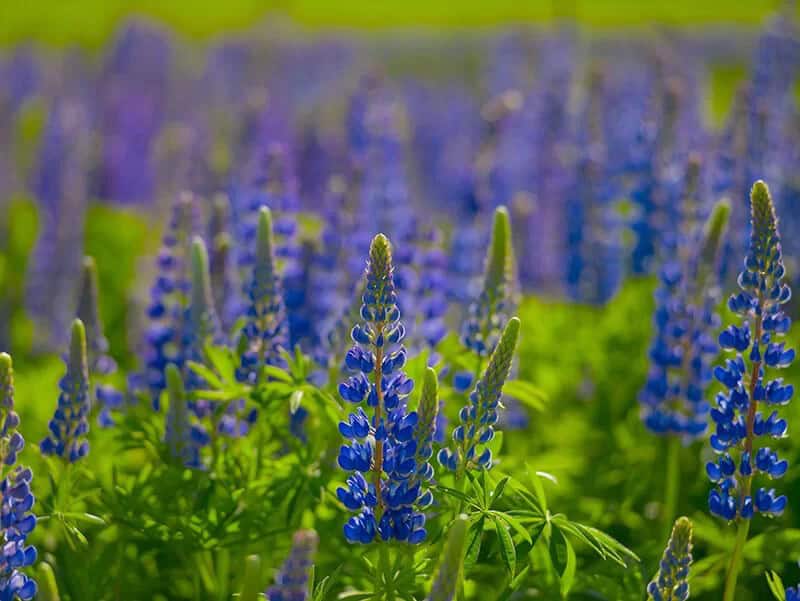As we go about our daily lives, it’s easy to overlook the profound impact that nature can have on our well-being. However, one aspect of nature that deserves special recognition is the simple beauty of flowers. The vibrant colors and delicate petals of these natural wonders have a profound effect on our emotions, evoking feelings of calmness and serenity.
This post will delve into the world of blue flowers, exploring the incredible variety of shades and options available for those looking to add a touch of blue to their garden or home.
27 Uniquely Aesthetic Blue Flowers for Your Outdoor Space
Indulge in the breathtaking beauty of over two dozen blue flowers, carefully curated to ignite your imagination and perhaps introduce you to novel varieties that have captured hearts worldwide. Whether you’re a floral enthusiast or simply seeking inspiration, this diverse collection is sure to captivate and encourage you to think beyond the ordinary.
Hydrangea (Hortensia)
The blue flower plant’s gentle petals evoke a sense of serene calmness. This unique species stands out for its ability to absorb aluminum ions, which affects the plant’s color. When grown in acidic soils with a pH of 6.0 or lower, the plant’s roots absorb more aluminum, resulting in a striking blue and purple hue. This popular houseplant is often used in funeral arrangements, symbolizing genealogy, gratitude, and enduring love.
Its calming presence makes it a thoughtful memorial choice for loved ones. Notably, this blue flower plant thrives in a wide range of zones (3-9) and requires minimal maintenance, tolerating limited sunlight and average watering. It’s an ideal addition to any home, offering a serene atmosphere that can be enjoyed throughout the spring, summer, and autumn seasons.
Blue Rose (Rosa)
While roses are often considered the oldest cultivated flower, with a history dating back over 35 million years, the Blue Rose is a rare and unique variety that has captured the hearts of many. According to the University of Illinois Extension program, the oldest rose fossils were found in Colorado, USA, and it’s said that this classic blue bloom boasts fragrant, deeply colored petals.
With its rich symbolism and ability to represent love in various colors, each with its own specific meaning, it’s no wonder why roses are often regarded as the most popular and sacredly held flower worldwide. The Blue Rose, specifically, is said to symbolize ‘mystery or something desired but unattainable’. This elusive beauty was first hybridized by Johann Christoph Schmidt in 1909 and adopted various names such as ‘Bleu Violet’ and ‘Blue Rosalie’.
Interestingly, the Blue Rose thrives in zones 2-10, growing well in full or partial sun during spring, summer, and autumn. With an average amount of watering, it excels in moist, well-drained soil with a pH range between 5.5 and 7.0.
Orchid (Vanda Coerulea)
The Blue Flower Plant: A Delicately Rare Beauty The Blue Flower Plant, also referred to as a corsage flower, is a rare and exquisite bloom that exudes elegance and charm. Its subtle fragrance only adds to its allure. These delicate flowers can be used as a stunning addition to modern home decor, much like a Phalaenopsis orchid or ornamental plant. Some species of blue flowers are native to Southeast Asia and Australia.
Symbolically, the Blue Flower Plant represents beauty, love, and fertility, making it a popular choice for special occasions. Its hardiness zoning ranges from 10 to 13, allowing it to thrive in a variety of environments. This perennial blooms year-round when grown naturally on forest floors or alongside other plants. When cultivating indoors, it’s essential to use a specialized soil mix designed specifically for orchids to ensure optimal growth.
Despite its delicate appearance, the Blue Flower Plant is surprisingly easy to maintain. It requires average watering and can thrive in both full and partial sunlight. Its low-maintenance needs make it an excellent choice for fashion and interior design enthusiasts seeking a unique ornamental flower.
Blue Dahlia
The Blue Flower Plant, a rare and majestic bloom, has been the subject of fascination for centuries. Its unique funnel-shaped petals and full-blooming beauty have captivated botanists and enthusiasts alike. Legend has it that the plant was discovered by Swedish botanist Anders Dahl, and its popularity has led to its adoption as an official flower in several regions, including Mexico.
Interestingly, the rarity of this color has even inspired cash prizes for those who can successfully cultivate it – although one attempt did yield a minimal success. The symbolic meaning behind the Blue Flower Plant is often attributed to its uncommonness, representing impossibility or inaccessibility. When given the right conditions – moist soil that’s slightly acidic and full sunlight with adequate watering – this plant thrives.
Outdoors, it blooms not once, but twice a year, during the summer and autumn seasons, in zones 3-11.
Lotus (Nelumbo)
The Blue Lotus, an exquisite aquatic blue flower, boasts a plethora of ornamental uses, including its stunning presence in food and beverage arrangements. Its rarity, coupled with the fact that it’s considered sacred in some regions, only adds to its allure. This perennial plant is imbued with symbolic meaning, conveying serenity, purity, wealth, and beauty. To cultivate this lovely bloom, one must provide rich, chalky soil with a pH range of 6.5-8.
0, specifically during the spring and summer months. While it requires average watering, it thrives best in full sunlight, making it an excellent choice for those seeking low-maintenance gardening options. For optimal growth, plant within a zone ranging from 4 to 10.
Blue Chrysanthemum
The humble Mum, native to Europe and Asia, holds a special place in many cultures. It’s the national flower of Japan, where it’s cherished for its beauty and symbolism. In Australia, it’s often associated with Mother’s Day, making it a popular choice for floral arrangements. This versatile bloom thrives in zones 4-11, basking in full sunlight from spring to autumn. To ensure optimal growth, Mums prefer soil with a pH level of 6.0-7.0 and consistent moisture levels.
With proper care, including regular watering and average maintenance, this lovely flower can flourish.
Water Lily (Nymphaea Nouchali)
Water lilies are fascinating blue flower plants that thrive in aquatic environments. One of their most intriguing features is their diel rhythm, opening during the day and closing at night. In the United States, they’re often associated with July’s birth flowers, excelling in warmer climates. This elegant plant exemplifies unity, balance, and harmony, earning sacred status in some religious traditions. It also symbolizes rebirth and fertility, making it a popular choice for outdoor ponds.
With proper care, water lilies can be cultivated to flourish in zones 9-11, bringing beauty and serenity to any outdoor space with minimal effort.
Hyacinth (Hycinthicus)
The heavenly scented hyacinth, a unique blue flower, has gained fame not only for its intoxicating aroma but also for being featured in perfumes. This plant has an entire day dedicated to it – World Hyacinth Day on March 7th. However, it’s essential to note that this type of blue flowers are toxic and should be handled with caution. Despite the toxicity, the hyacinth holds significant meanings including spring, rebirth, sport, sorrow, and regret.
One notable characteristic is its limited blooming period in the Spring, typically in zones 4-8. To thrive, it requires minimal maintenance and well-drained, moist soil that’s slightly acidic to neutral in pH.
Blue Grape Hyacinth (Muscari)
These remarkable flowers boast grape-like bulbs that share a striking resemblance to their namesake fruit. What sets them apart from other varieties is their edibility – unlike the Hyacinth, which is toxic. In fact, the bulbs can even be pickled in vinegar for added culinary versatility. As an emblem of confidence, mystery, and creativity, they exude a sense of power.
Flourishing primarily in the spring season across zones 4 to 9, these low-maintenance blooms thrive in environments with moist, well-drained soil and full or partial sunlight.
Iris
The majestic blue flower plant, a true masterpiece of nature, has long been admired for its unique beauty and versatility. Not only does it have the power to perfume the air, making it perfect for adding a touch of elegance to any decor, but it also holds deep symbolic meaning. The vibrant hue of this bloom is reminiscent of a rainbow, symbolizing purity, faith, and hope – qualities that evoke a sense of nobility.
Unlike many other flowering plants, this stunning specimen thrives in all seasons within zones 3-9, making it an excellent choice for gardeners of all levels. To coax the best from your blue flower plant, ensure its soil is consistently moist but well-drained, with a slightly acidic pH. With minimal upkeep required, simply provide standard watering and enjoy basking in the beauty of either full or partial sun.
Cornflower (Centaurea)
JFK’s favorite flowers, commonly referred to as Basket Flower or Bachelor’s Button, are a unique blue-on-blue bloom that exudes coolness. Interestingly, this flower has the rare ability to thrive both as an annual and perennial, with its growth cycles limited to spring and summer, typically in zones 2-11. While it can tolerate partial sunlight, what’s crucial is that it grows in moist and rich soil, with a pH level between 5.5 and 7.0.
With these conditions met, the maintenance requirements are minimal, making it an attractive option for gardeners.
Dogbane (Oleander)
The Dogbane plant, known for its unique resemblance to an olive tree due to its leaf shape, is a versatile species that can thrive as both a shrub and a tree. With symbolism tied to desire, romance, charm, destiny, and caution, this plant has a rich cultural significance. In the ideal growing seasons of Spring, Summer, and Fall, Dogbane requires a specific zone range of 8-11 for optimal growth. Its remarkable adaptability allows it to survive long-term under varied conditions.
Clematis
Clematis, also known as Leather Flower or Traveler’s Joy, boasts a unique appearance that can be described as vine-like or shrub-like, with perennial qualities. This plant has garnered attention for its toxicity to both humans and animals, potentially causing skin irritation. The symbolism surrounding Clematis is multifaceted, encompassing deceit, ingenuity, and beauty.
To thrive, this versatile plant requires a specific set of conditions: it thrives in full or partial sunlight and prefers moist, rich soil with a pH range of 5.5 to 7.0. Its hardiness zone spans an impressive range of 3 to 11, making it a low-maintenance option that can tolerate normal watering.
Delphinium (Larkspur)
A majestic blue bloom, characterized by its stalk-like appearance and spiky texture, can be found in the Northern Hemisphere as well as certain regions of Africa. The species, which boasts a unique hue that’s unparalleled within its genus, has historically been utilized as a natural dye and even as a medicinal remedy to aid sleep.
Despite symbolizing levity, joy, and a sense of fun, this flower is not without its drawbacks – it can cause digestive issues and skin irritation when ingested or touched. However, the good news is that its toxicity tends to decrease with age. This perennial thrives during the Summer and Autumn seasons within USDA zones 3-7, where it requires well-draining soil with a slightly acidic pH and consistent moisture levels.
Additionally, it needs to be exposed to either full or partial sunlight for optimal growth.
Geranium (Cranesbills)
This beloved plant is a staple in many gardens, renowned for its striking appearance and versatility. Its popularity stems from its ease of growth, making it an ideal choice for beds, borders, and containers alike. The fragrance of the plant also lends itself well to various uses, including the production of essential oils for aromatherapy and perfumery purposes. Furthermore, the dried leaves can be used to create a soothing herbal tea.
In terms of symbolism, this plant is often associated with friendship, happiness, and positivity. As an added benefit, it thrives in a wide range of environments, tolerating both spring and autumn temperatures and growing well in zones 2-10. With a slightly acidic soil pH, the conditions are ideal for optimal growth. While requiring minimal upkeep, the plant does necessitate normal watering and can tolerate full or partial sunlight, making it an accessible addition to any garden.
Blue Periwinkle (Vinca)
This enigmatic flower, resembling a pinwheel, makes for a stunning addition to beds and borders. Its unique charm lends itself perfectly to creating beautiful bouquets for special occasions or adding a decorative touch to your home. Moreover, its medicinal properties have been harnessed to treat a range of ailments, including colds, coughs, sore throats, and diabetes. It has also been used to alleviate eye and lung infections.
Symbolically, the flower is often associated with benevolence, nostalgia, purity, and – in contrast – sadness. As a perennial or shrub, it blooms during summer and fall, thriving in zones 3-11. The flower excels in moist, well-drained soil and is adaptable to varying pH levels. Its tolerance for different sunlight conditions – from full sun to partial shade – further simplifies its care, making it an attractive choice for those seeking low-maintenance beauty.
Forget-Me-Nots (Myosotis)
The forget-me-not flower, typically a small, blue bloom with variations in color, has roots in common folklore across France and Germany. This flower holds significant symbolic meanings – it’s the state flower of Alaska, even preceding its statehood, and serves as a symbol for memory loss through its association with the Alzheimer’s Society. Additionally, it represents International Missing Children’s Day.
The plant has been used in traditional medicine and embodies Hope, remembrance, true love, and undying devotion. However, it also carries connotations related to death and funerals. As a low-maintenance plant, forget-me-not thrives in zones 3-9, blooming during Spring and Summer months. It excels in rich, moist, and well-drained soil with a pH range of 5.5 to 7.5, tolerating normal watering and sunlight conditions, including full and partial sun.
Blue Globe Thistle (Echinops)
The Burdock plant, often mistaken for its soft-spoken cousin the dandelion, is a far cry from being gentle to handle. Its sharp spines demand caution when handling, making garden or utility gloves an essential companion. With roots used historically in medicinal practices, this perennial has symbolic connotations of independence and nobility. Typically thriving during the summer months (zones 3-9), Burdock requires well-drained soil with a pH range of 5.5 to 7.0 for optimal growth.
A low-maintenance addition to any garden, it adapts well to normal watering and can flourish in both full and partial sunlight conditions.
Blue Flax (Linum Perenne)
Flaxseed plants are another type of blue flora that is often recognized for its linseed oil, also known as flaxseed oil. These flowers hold significant symbolic meaning, representing the domestication of a new home and wisdom, particularly for newlyweds receiving them as a gift. In terms of growing conditions, flaxseed plants thrive in springtime environments, typically found in zones 3-9, with sandy and well-drained soil being ideal.
They also require minimal upkeep, including low watering needs and optimal results in full sunlight.
Morning Glory (Ipomoea)
A distinctive funnel-shaped bloom draws hummingbirds and other pollinators to its herb-like foliage, which can take the form of climbers, shrubs, or trees. This enigmatic flower is more than just a pretty face – its seeds contain a toxic compound with hallucinogenic properties similar to LSD. Despite this potency, the flower itself has been used medicinally for various purposes and as an ornamental addition to food.
In many cultures, the plant holds symbolic significance, representing either love or mortality. The versatility of this species is further demonstrated by its classification into annuals, climbers, perennials, shrubs, and trees. Hardy in zones 2-11, it thrives in well-drained soil with full sunlight, requiring only normal watering to flourish. Its growth seasons are typically confined to Spring, Summer, and Autumn.
Bellflower (Campanula)
With its distinctive bell-like shape, the flower is often synonymous with death, frequently planted on graves. However, what’s less known is that it can be incredibly robust in its growth, potentially becoming overgrown. Despite this, the entire plant is edible and packed with nutrients, including Vitamin C. This blue beauty represents gratitude, humility, and everlasting love, making it a popular choice for gardens.
Thriving in conditions ranging from full sun to partial shade, the plant prefers well-drained soil and moderate watering, making it a low-maintenance addition to any outdoor space. Found in zones 3-9, it’s a great option for gardeners in these regions who want to enjoy its beauty during the spring and autumn seasons.
African Lily (Agapanthus)
A majestic bloom known as the Lily of the Nile, its unique funnel-shaped clusters are also referred to as the Flower of Love. This enigmatic flower has a rich history, being considered an aphrodisiac in Africa, while also boasting medicinal properties. Its stunning appearance makes it a popular choice for cut flower arrangements, with the added benefit that it can remain fresh in water for over a week.
Symbolizing love, fertility, purity, and beauty, this captivating plant is often associated with positive emotions. As a type of bulbous perennial, it thrives in zones 6-11, where it blooms during both Autumn and Summer seasons. To flourish, the Lily of the Nile requires fertile, moist, and well-drained soil that can accommodate a range of pH levels from acidic to alkaline.
It also excels in full or partial sunlight, with average watering and low maintenance requirements making it an ideal choice for gardeners of all skill levels.
Himalayan Blue Poppy (Meconopsis Betonicifolia)
Native to Tibet and holding the esteemed title of national flower in Bhutan, the rare blue blossom is a symbol of untapped potential and endless possibilities. This perennial requires specific growing conditions to thrive, including rich, moist yet well-drained soil with a slightly alkaline to acid pH level. It flourishes in zones 7-8, basking in partial sunlight, and bursts into bloom during late Spring to early Summer.
Blue Sweet Pea (Lathyrus)
The butterfly-shaped blue flower is a Mediterranean native with a fragrant charm. While its seeds may seem appealing, they pose a serious risk if consumed raw – lathyrism can result from ingestion, leading to total paralysis and brain damage. To make them edible, the seeds must be boiled and soaked. As a symbol of gratitude and happiness, this flower doesn’t demand much maintenance. Its versatility shines as Annuals, Climbers, and Perennials.
It thrives in zones 2-11, requiring full sun and blooming across Spring, Summer, and Autumn seasons. The ideal growing conditions include moist, well-drained soil, with the ability to survive in acid, alkaline, or neutral environments.
Birdbill Dayflower (Commelina Diffusa)
With their delicate orchid-like appearance, the morning-glory like blooms of the birdbill dayflower unfold at dawn only to fade away by midday. Natively found in the southwestern United States, including Arizona, Colorado, New Mexico, Texas, and northern Mexico, this perennial thrives on dry, well-drained slopes during the summer months. Notably, the birdbill dayflower is also often associated with funeral traditions.
Pincushion Flower (Scabiosa)
The humble cosmos flower, characterized by its pincushion-like appearance, is native to Africa, Europe, and Asia. When cut, the blooms make for a lovely addition to any floral arrangement. With its nectar-rich petals, it’s no wonder that both humans and bees alike are drawn to this charming flower.
In fact, the cosmos has a rich history of being used in traditional medicine, with some believing it held the power to cure scabies, a highly contagious parasitic skin infection caused by the itch mite. As a symbol of love, purity, and peace, the cosmos is often revered for its gentle beauty. What’s more, this hardy flower is easy to cultivate, requiring minimal upkeep and thriving in zones 3-9.
To grow your own cosmos, be sure to provide it with full sun, as well as rich soil with proper drainage – a pH range of 5.0 to 7.5 being suitable. With its ability to bloom in both summer and autumn, the cosmos is a versatile and rewarding addition to any garden.
Blue Lupine
In the Mediterranean, North Africa, Australasia, and the Americas, a unique plant thrives, characterized by its pea-like appearance. Interestingly, Australia is the world’s largest producer and exporter of this plant, with a long history of using its seeds as a food source. These annual and perennial species are often associated with happiness, creativity, and imagination, making them a popular choice for many gardeners. One of their best features is that they require minimal maintenance.
When it comes to growing conditions, these plants prefer zones 4-8, where they can thrive in full or partial sun during the spring and summer months. For optimal growth, they need well-drained soil with a neutral to slightly acidic pH, ranging from 5.5 to 7.0.
27 Ways to Make Your Garden Bloom with Blue Flowers
As you venture into your garden, landscape, or home decor endeavors, remember that there’s a world of possibilities beyond what’s been discussed here. Don’t confine yourself to traditional choices – take the leap and explore alternative options. The subtle yet striking addition of Azure accents can elevate the sophistication of your home decor, inspiring you to break free from convention and try something new. Even the most mundane workspaces can be revitalized with a fresh perspective.
Embrace change and seize the opportunity to transform not just your surroundings, but also your outlook – who knows what wonders it may bring?
